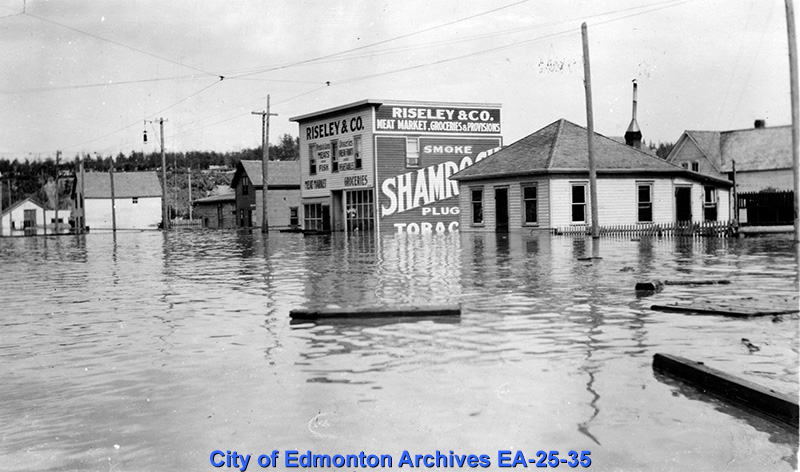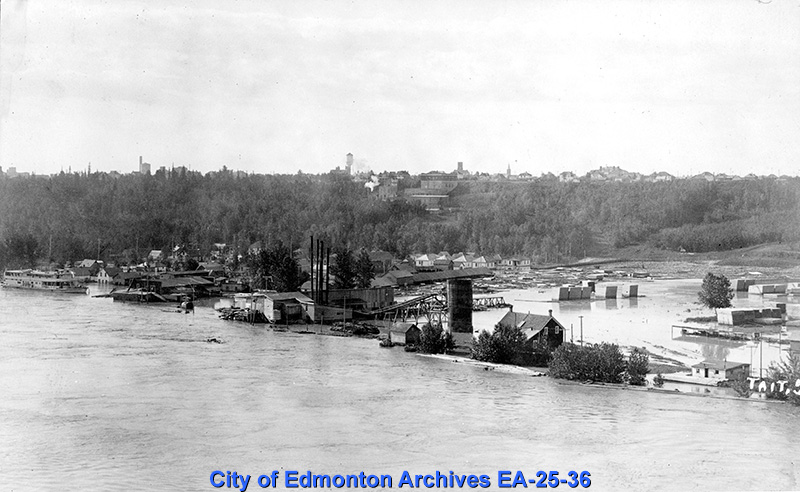WATCH ABOVE: A century ago, the banks of the North Saskatchewan river burst, forever changing the course of Edmonton. Eric Szeto has the story.

Editor’s Note: This story was published in June 2015, and shared again on August 24, 2016 because of high streamflow.
EDMONTON — The Low Level Bridge was on the brink of being submerged and thousands of people were forced from their homes. The North Saskatchewan River rose more than 10 metres, swallowing up much of the low-lying areas. 100 years ago the river valley was ravaged by flooding that, to this day, remains one of the the worst natural disasters in Edmonton’s history.
“It was devastating. The brickyards, the lumber yards, the tannery yards, the brewery. All kinds of businesses, homes, everyone was devastated by that,” said Jade Dodd with the John Walter Museum, located in Kinsmen Park.
The area was once home to the Walterdale community. In fact, much of Edmonton’s river valley was home to businesses and neighbourhoods. That all changed on June 28, 1915.
Heavy spring runoff and days of rain caused the river to rise dramatically. A warning telegram was sent from Rocky Mountain House on the 27th. “My god Edmonton, look out. The river’s up 20 feet and it’s still jumping,” it read.
With many Edmonton men away serving in World War I, most families had to fend for themselves against the rapidly rising waters. Several communities along the river were completely submerged under 13 metres (42 feet) of water, and thousands of Edmontonians were left homeless. The cost of the damage in today’s dollars was well over $20 million.
GALLERY: 1915 flood photos from the City of Edmonton Archives
After the great flood of 1915, the City of Edmonton adopted a policy limiting new development in low-lying areas, which in many ways created the city we know today.
Out of disaster a city jewel emerged: the river valley now the largest urban green space in North America.
“Everyone did relocate out of the river valley,” said Christina Hardie, with the John Walter Museum. “Because of that we have that beautiful stretch of river and the river valley system.”
But another great flood could happen anytime. So how does the city prepare for it? Officials say there are better notification systems and better water management programs now.
“This is a city that knows that extreme weather can happen at any time, we’ve experienced that in many different waves,” said David Holehouse with the city’s sustainable development department. “Of course we want to be prepared so if future events do happen, we have very much prepared.”
Holehouse said the city and province work together to ensure emergency plans are in place. He also said the province has introduced water control measures upstream on the North Saskatchewan River and along its tributaries.
It’s impossible to prevent the next disaster, but it is possible to mitigate the damage.
“We have a very sophisticated and robust emergency management system now within the city, and we work with the police, the province and the Federal government,” said Holehouse.







































Comments